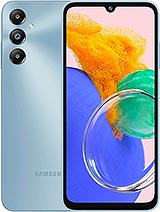OnePlus 13s alternatives
Tap above to see alternatives.
Samsung Galaxy F14 4G alternatives
Tap above to see alternatives.
OnePlus 13s

OnePlus 13s
-
Snapdragon 8 Elite
3 nm
-
5850 mAh
80W
-
6.32"
1216 x 2640 pixels
-
50 MP
4K@30/60fps
-
Specs

Samsung Galaxy F14 4G

Samsung Galaxy F14 4G
-
Snapdragon 680
6 nm
-
5000 mAh
25W
-
6.7"
1080x2400 pixels
-
50 MP
1080p@30fps
-
Specs

2x4.32 GHz Oryon V2 Phoenix L
6x3.53 GHz Oryon V2 Phoenix M
2.4 GHz, Quad core, Kryo 265
1.9 GHz, Quad core, Kryo 265
12GB 512GB (UFS 4.0)
Sony LYT-700, f/1.8, 24mm (wide), 1/1.56", 1.0µm, multi-directional PDAF, OIS
50 MP
Samsung S5KJN5, f/2.0, (telephoto), 1/2.75", 0.64µm, 2x optical zoom, PDAF
f/1.8, (wide)
2 MP
f/2.4, (depth)
2 MP
f/2.4, (macro)
1080p@30/60/240fps
OmniVision OV32C, f/2.0, 21mm (wide), 1/3.1", 0.7µm, AF
f/2.0, (wide)
1080p@30fps
SIM1: Nano, SIM2: Nano
SIM1: Nano, SIM2: Nano
FDD: N1, N3, N5, N8, N26, N28
TDD: N38, N40, N41, N48, N66, N77, N78
FDD: N1, N3, N5, N8, N26, N28
TDD: N38, N40, N41, N48, N66, N77, N78
In this comparison, the OnePlus 13s with the Qualcomm Snapdragon 8 Elite (3nm) performs better than the Samsung Galaxy F14 4G with the Qualcomm Snapdragon 680 (6nm), thanks to its more efficient chipset.
The OnePlus 13s offers 4 years of OS updates, while the Samsung Galaxy F14 4G provides 2 years. When it comes to security updates, OnePlus 13s leads with 6 years of support.
OnePlus 13s has a superior AMOLED display, while Samsung Galaxy F14 4G uses an LCD panel. Moreover, it offers a higher 120 Hz refresh rate for smoother scrolling. These phones offer the same brightness level at nits. Notably, OnePlus 13s has a higher resolution display, resulting in sharper visuals.
OnePlus 13s has a larger 5850 mAh battery for longer usage. OnePlus 13s supports faster wired charging at 80W.
OnePlus 13s has an IP65 rating, while Samsung Galaxy F14 4G lacks official water and dust resistance.










